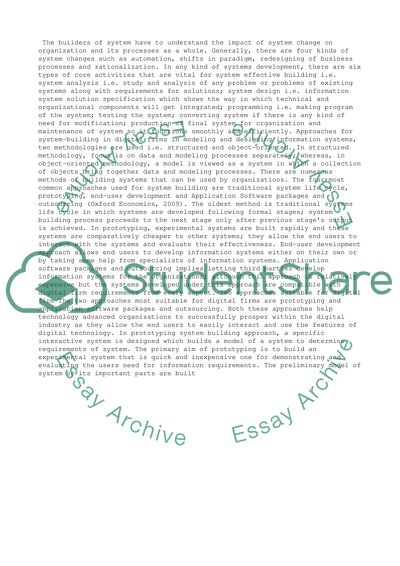Cite this document
(“Approaches for System Building in Digital Firm Era Essay”, n.d.)
Retrieved from https://studentshare.org/management/1455753-describe
Retrieved from https://studentshare.org/management/1455753-describe
(Approaches for System Building in Digital Firm Era Essay)
https://studentshare.org/management/1455753-describe.
https://studentshare.org/management/1455753-describe.
“Approaches for System Building in Digital Firm Era Essay”, n.d. https://studentshare.org/management/1455753-describe.


